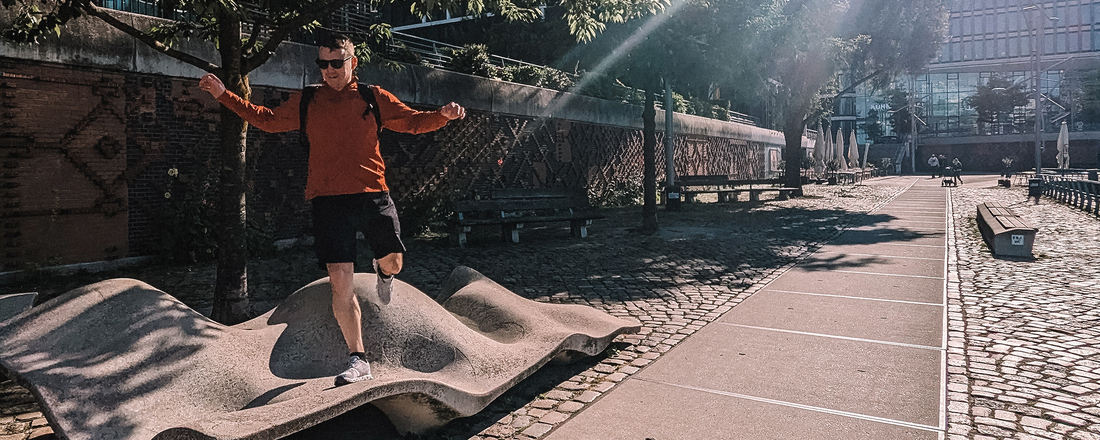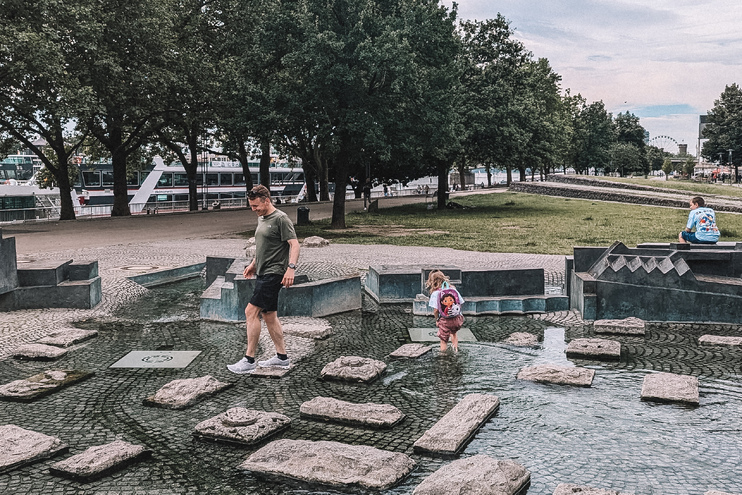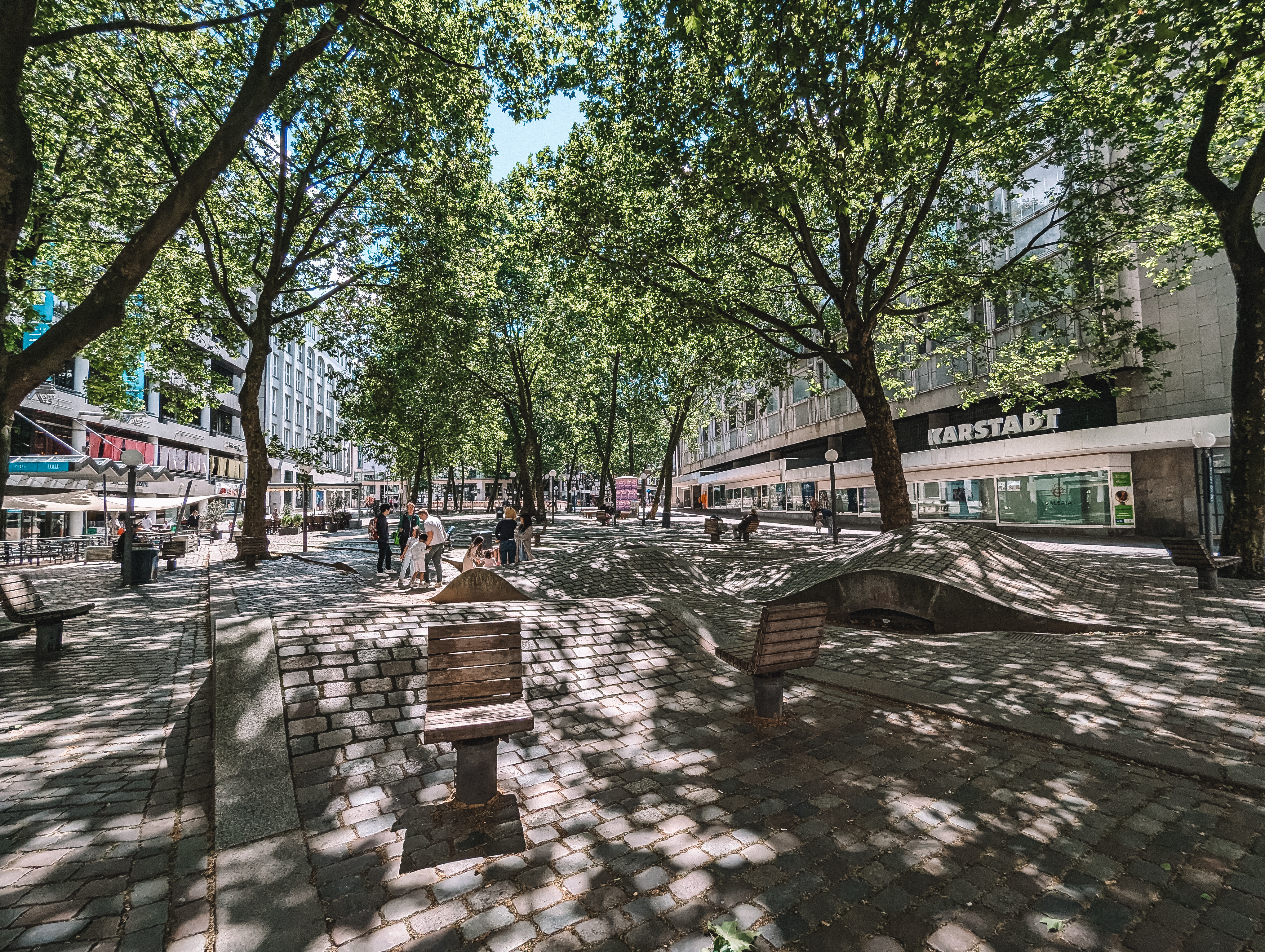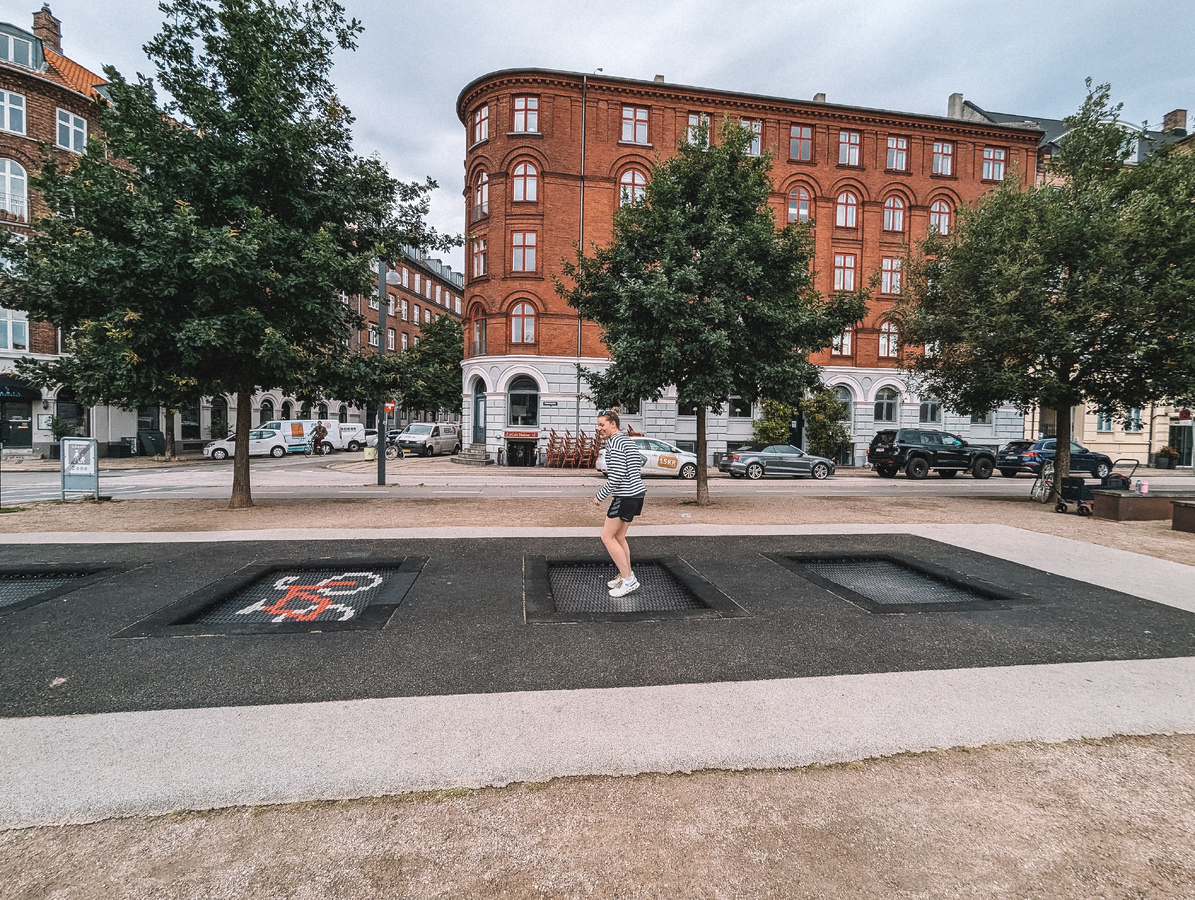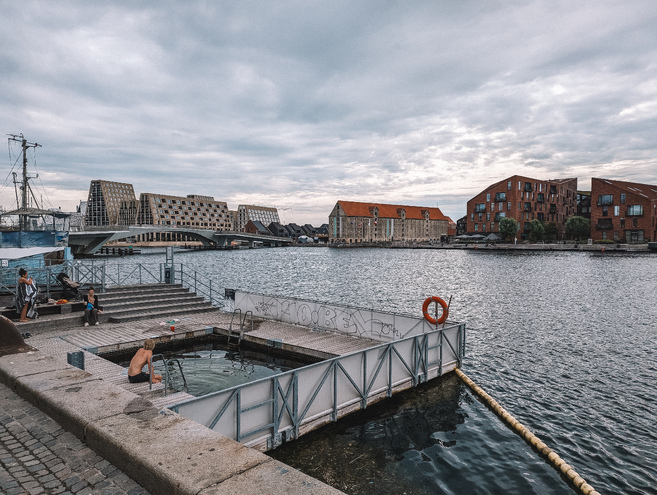Get updates from The Developer straight to your inbox Yes, please!
“The healthiest places have spontaneous play engrained in their public spaces”
Inspired by one too many episodes of Race Across the World, Josh Dickerson takes a whirlwind tour of play spaces across Europe and finds open-ended, non-structured play spaces in lieu of fenced-off playgrounds

Josh Dickerson is Director of Place at BWB Consulting and Director at Deetu
With the excuse of reaching a friend in Aarhus, this summer my partner and I embarked on a whirlwind tour that involved more modes of transport than you can shake a pastry at. What I didn’t tell her was that our summer “holiday” would also be a geography study tour of placemaking projects in Brussels, Cologne, Hamburg, Copenhagen and Aalborg.
Inspired by one too many episodes of Race Across the World, unlike the show smartphones and credit cards were used, a route was plotted in advance and seats reserved on trains. I also had a list of placemaking projects in my rucksack.
Our final destination was Denmark, the country renowned for Lego (leg godt means play well), but the endless kilometres of high-speed train travel were broken up with stops along the way with a chance to stretch our legs and experience the urbanism.
First stop Cologne, where we drew bemused looks from parents as we “tested” the Paolozzi Fountain in the Rhine Garden, created by Eduardo Paolozzi, a Scottish graphic artist and sculptor. Built in the 1980s on land that was formerly a busy road, the blocks in flowing pools of water nod to the former industrial heritage of the area whilst being the cornerstone for play alongside a lively wider waterfront public realm.
Then to Hamburg, where playful design could be found in an area boasting to be Europe’s largest inner-city urban development, HafenCity. From the boat’s sail roof topping the brick façade anchor plot of “Elphi” (Elbphilharmonie), to the wavy benches on the Marco Polo Terraces and the pirate playground of the verdant Grasbrookpark, there are plenty of subtle sea-like resemblances throughout this newly establishing community. HafenCity looks to revitalise Hamburg’s former industrial ports whilst also linking back to the nearby Speicherstadt (warehouse city).
The brief stop in Hamburg also allowed for consideration of not just play, but another P-word: prevention. The adoption of straightforward, yet conscious, placemaking interventions that promote good wellbeing, social cohesion and a sense of belonging could help prevent loneliness and ill health that require intervention at a later stage.
As we prepared for the onward journey to Copenhagen, it seemed natural that the railside tarmac had become a fitness studio
The benches in Hamburg’s Gerhart Hauptmann Square provide an example of this. In using either single seats oriented towards other people, or circular forms, this open area was created to form areas of calm, but also to encourage communication among the users.
In Germany, we found open-ended, non-structured spontaneous play in its public spaces rather than formalised play in specific fenced off and enclosed spaces. Perhaps this is achieved with a more relaxed approach to health and safety, but perhaps this fostered sense of civic pride in shared spaces that allow for more communal management and upkeep.
In Denmark, our delayed train pulled into the border crossing at Padborg station just as Pilates on the platform began. As we prepared for the onward journey to Copenhagen, it seemed natural that the railside tarmac had become a fitness studio.
The promotion of good health and prevention through play in public space was evident throughout Copenhagen. Even the official tourism organisation for the region says they take having fun seriously. This became apparent from the first bounce on the public trampolines at Havnegade Promenade, the screams of joy coming from Tivoli Gardens, and witnessing junior cyclists learn about road safety at the Fælledparken Children’s Traffic Playground.
More age-appropriate forms of exercise and play were also available. We took a guided kayak tour of Copenhagen which offered a unique perspective of the changing waterfront, including a behind the scenes view of the impressive Papirøen (Paper Island).
The tour operators, Kayak Republic also offer the ingenious Green Kayak initiative that provides a free kayak and equipment to collect waste and keep the water clear of rubbish (The look of absolute incomprehension from our kayak guide as we explained the state of the UK’s waterways was not unexpected.)
Next, only a half-hour cycle away, we visited the Carlsberg City District redevelopment. Hopping on our bike from Mobility as a Service (MaaS) provider of choice, Donkey Republic, the impressive granite elephants flanking the gate welcome you to the original site of the Carlsberg Breweries. A new neighbourhood is forming here with residential development wrapping around shared greenspaces, educational institutions and sustainable drainage systems features that feel integrated into the public realm. There are swales with seating areas and active sunken football pitches operating as drainage attenuation basins.
It is easy to focus on examples from just within Copenhagen, but the Danes look at how they create sustainable places and make liveable places outside of the capital as well. So, after a ferry and a bus to reach Jutland, Denmark’s fourth biggest city, Aalborg was next on the list. With an industrial history, the city has recently reinvented itself as a cultural hub for the region, with impressive architecture along the waterfront and new student accommodation to support its status as a thriving cultural university city.
The penultimate stop of the trip featured little in the way of recent placemaking regeneration, but Skagen, the most northernly town in Denmark, must have an honourable mention for the most picturesque landscapes and to witness the meeting point of the Skagerrak and Kattegat seas. Finally, we went south to reach our friend in Aarhus.
Like many cities that previously required their waterfront for industrial use the Aarhus Docklands has been reclaimed for city living. Tipped as being the coolest neighbourhood in Denmark’s second city, Aarhus dockland offers wakeboarding, harbour baths, greenhouse dining and an artificial beach, all within a 15-minute walk of your jagged roof Iceberg apartment block or the dockside container based tiny house. With the port and wider industrial uses still in the distance, the sheer scale of this brownfield redevelopment is just as impressive as the architectural design of this newly forming neighbourhood.
Finally, it was time for a bus to Billund, a flight back to Manchester and a couple more trains for a much-needed stop at home. So 202,977 steps, 10 trains, three bikes, two buses, two taxis, one ferry, one flight, one kayak and two exhausted travellers later, our whistlestop tour of pertinent placemaking projects came to an end.
Returning to the UK, reflecting on the commonalities between exemplary places that I had seen, it was clear the places that felt the healthiest were those where play felt open-ended, there was presence of children and when careful consideration had been taken to naturally engrain play into the place.
These spaces were largely within high-density urban environments that have prioritised quality active travel infrastructure and seem to have instilled a sense of civic pride within the places that doesn’t just create respect for the physical surroundings, but for those that want the freedom to explore, learn and play within them.
There’s one more “P” in this piece: Privilege. Not everyone is in the position to travel in the manner explained in this article and have the luxury of time to spend on attaining these perspectives. But making the journey itself part of the holiday certainly helped me to understand more about the people and places visited.
Details of the trip:
Home - London (Train), London - Brussels (Train), Brussels - Cologne (Train), Cologne - Hamburg (Train), Hamburg - Copenhagen (Train), Copenhagen - Aalborg (Bus & Ferry), Aalborg - Skagen (Train), Skagen - Aalborg (Train), Aalborg - Aarhus (Train), Aarhus - Billund (Bus), Billund - Manchester Airport (Flight), Manchester Airport - Manchester Piccadilly (Train), Manchester Piccadilly - Home (Train).
Places visited:
Rhine Garden (Cologne)
HafenCity (Hamburg)
Papirøen (Copenhagen)
Carlsberg City District (Copenhagen)
Aalborg Harbourfront (Aalborg)
Aarhus Docklands (Aarhus)
Josh Dickerson is Director of Place at BWB Consulting and Director at Deetu
If you love what we do, support us
Ask your organisation to become a member, buy tickets to our events or support us on Patreon
Sign up to our newsletter
Get updates from The Developer straight to your inbox
Thanks to our organisation members
© Festival of Place - Tweak Ltd., 124 City Road, London, EC1V 2NX. Tel: 020 3326 7238
